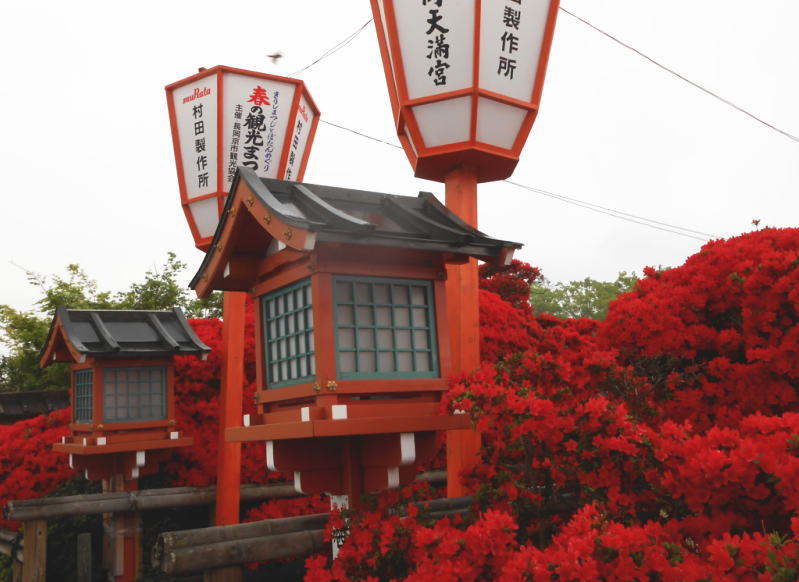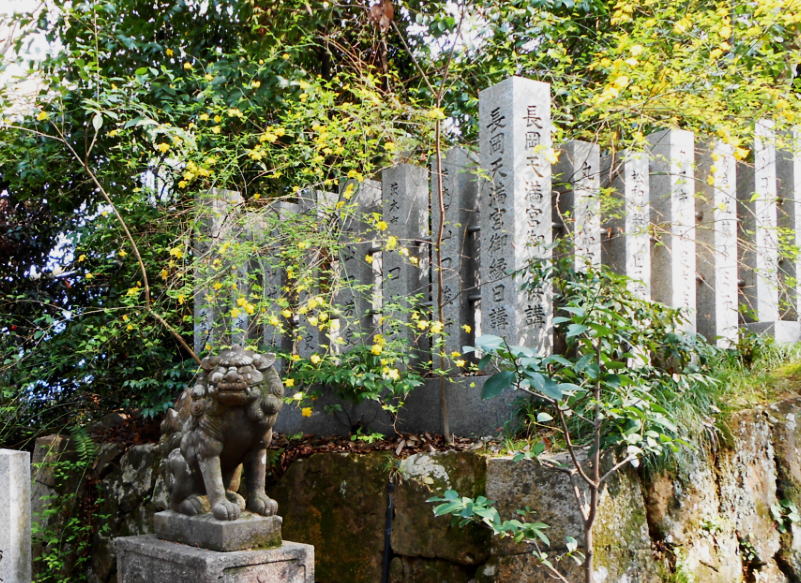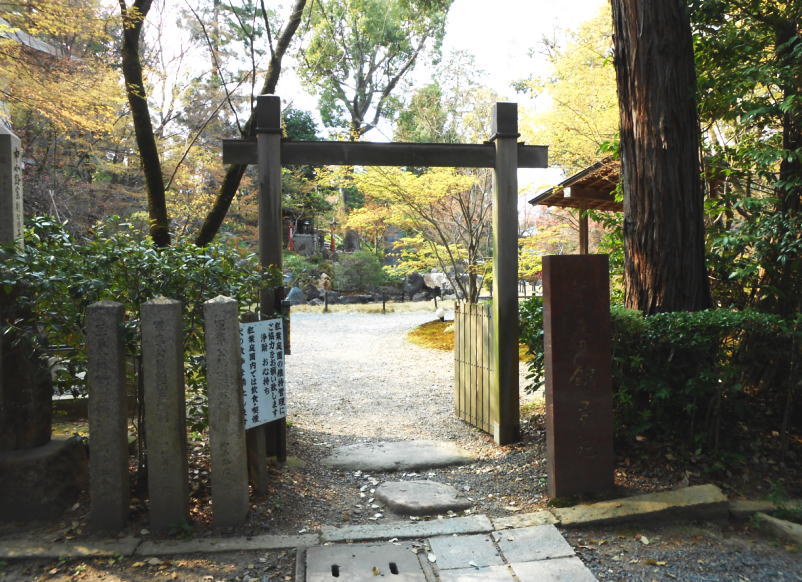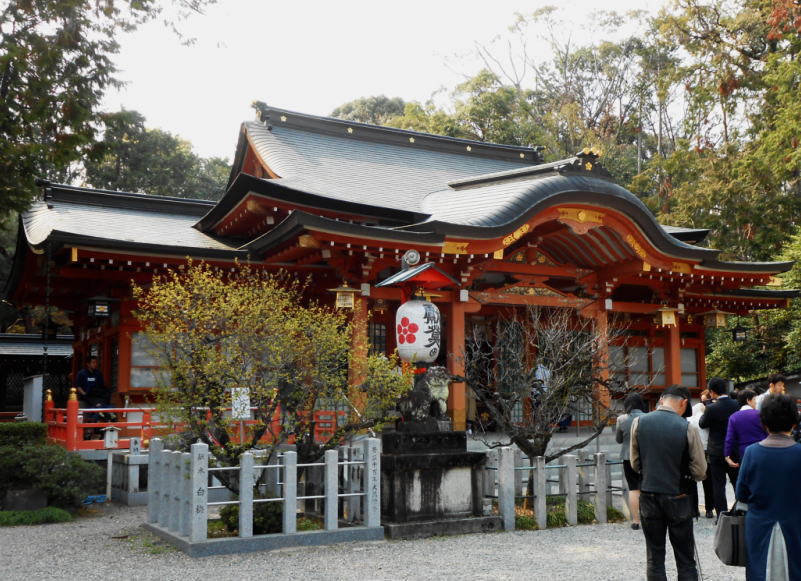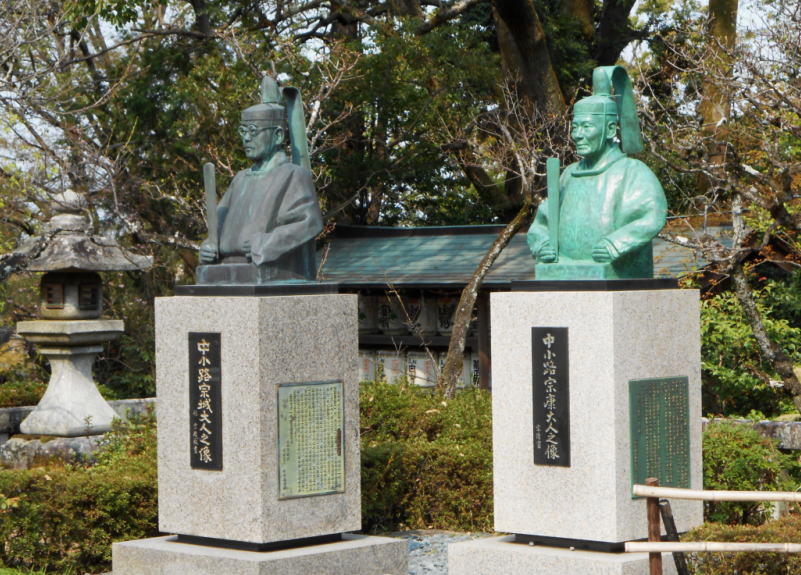
|

A Shrine Honoring Michizane , Patron of Academy
Leisurely Strolling Around the Site, the Tragic Talent of the Era Spent His Youth
長岡天満宮
Nagaoka Temmangu Shrine
 「天満宮」と言えば「学問の神さま」。ところで、天満宮ってつく神社ってあちこちあるわよね。アンタ、全国でいくつあるか知ってる?なんと12,000社以上もあるんだって。すごいわよ、これ。全国の都道府県が47として、1つの都道府県に一体いくつあんのよって感じね。で、総本山はやっぱり福岡の太宰府天満宮。ま、企業で言ったら「本社」よね。
「天満宮」と言えば「学問の神さま」。ところで、天満宮ってつく神社ってあちこちあるわよね。アンタ、全国でいくつあるか知ってる?なんと12,000社以上もあるんだって。すごいわよ、これ。全国の都道府県が47として、1つの都道府県に一体いくつあんのよって感じね。で、総本山はやっぱり福岡の太宰府天満宮。ま、企業で言ったら「本社」よね。 てなわけで、ここは京都府の長岡市にある天満宮。長岡天満宮が建てられたのは昌泰元年(901年)、応仁の乱(1467年~1477年)のときに社殿が焼けて、現在のものはもち、再建されたもの。言い遅れたけどさ、天満宮ってば→菅原道真(すがわらみちざね)って人をお祀(まつ)りしてるとこなのよ。
てなわけで、ここは京都府の長岡市にある天満宮。長岡天満宮が建てられたのは昌泰元年(901年)、応仁の乱(1467年~1477年)のときに社殿が焼けて、現在のものはもち、再建されたもの。言い遅れたけどさ、天満宮ってば→菅原道真(すがわらみちざね)って人をお祀(まつ)りしてるとこなのよ。 でさ、この長岡天満宮って、菅原道真とどういうゆかりがあるのかってことだけどさ、なんでも、在原業平(ありわらのなりひら)とかといっしょに遊びに来たところなんだって。へえ~、学問の神さまっていうから勉強ばっかりしてたのかと思ってたら、遊ぶこともあったんだ、やっぱり、「よく遊びよく学べ」よね~。でもさ、こういう人になると「遊び」って言ったって、池で鯉を釣ったり、泳いだり、木に登ったりとか、そんなんじゃないわよ。詩歌管弦(しいかかんげん)よ。じゃ、詩歌管弦っていったいどういう遊びよ?ってことになるけど、カラオケとかじゃないわよ。「詩」はたいてい漢詩のことで、「歌」は和歌、「管弦」っていうのは楽器を演奏することね。なんか風流ねえー。思わず、アタシもちょっと「歌」でも詠んでみたくなったわよ。どれどれ…
でさ、この長岡天満宮って、菅原道真とどういうゆかりがあるのかってことだけどさ、なんでも、在原業平(ありわらのなりひら)とかといっしょに遊びに来たところなんだって。へえ~、学問の神さまっていうから勉強ばっかりしてたのかと思ってたら、遊ぶこともあったんだ、やっぱり、「よく遊びよく学べ」よね~。でもさ、こういう人になると「遊び」って言ったって、池で鯉を釣ったり、泳いだり、木に登ったりとか、そんなんじゃないわよ。詩歌管弦(しいかかんげん)よ。じゃ、詩歌管弦っていったいどういう遊びよ?ってことになるけど、カラオケとかじゃないわよ。「詩」はたいてい漢詩のことで、「歌」は和歌、「管弦」っていうのは楽器を演奏することね。なんか風流ねえー。思わず、アタシもちょっと「歌」でも詠んでみたくなったわよ。どれどれ…池の鯉、色とりどりに泳ぎけり
たれそ見つるや 一尾(いちび)拝食(はいしょく)
The location where
Among aristocrats in those days, composing

